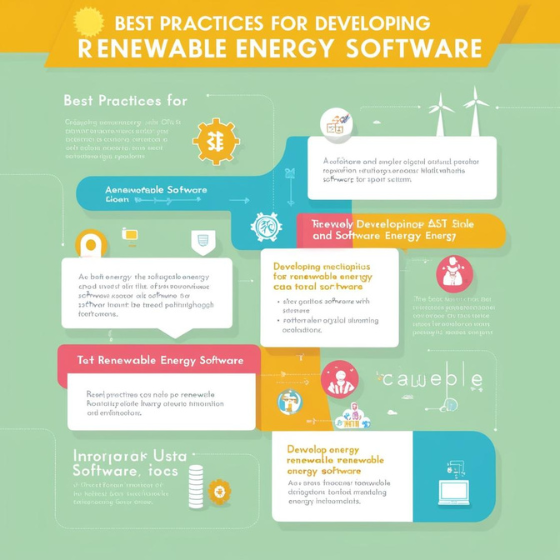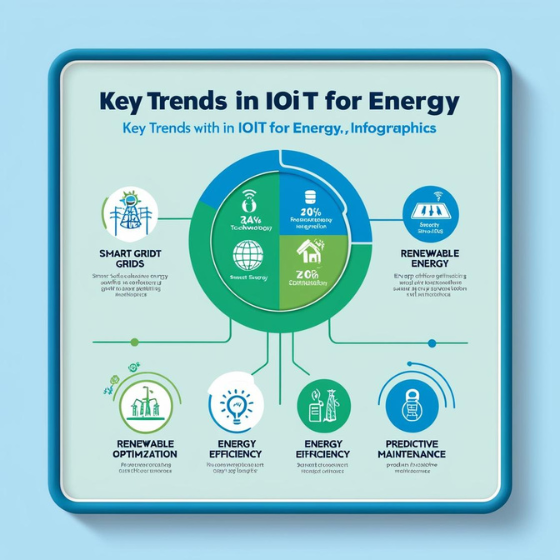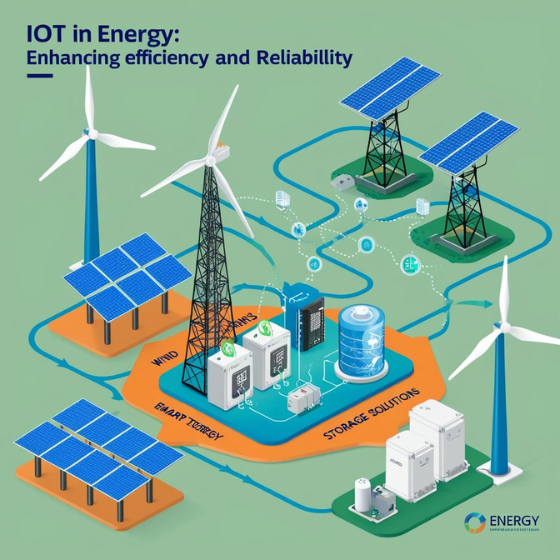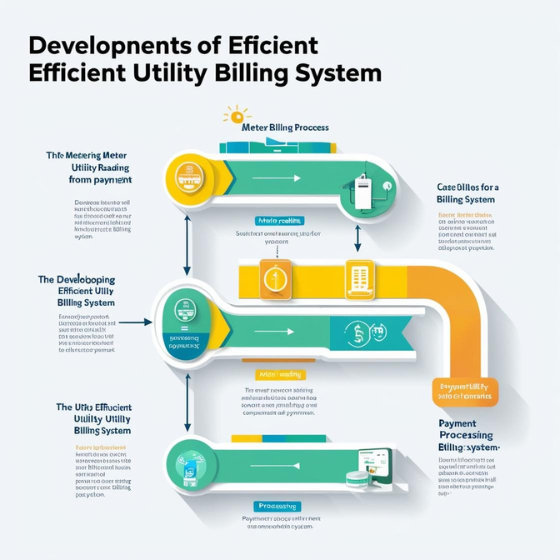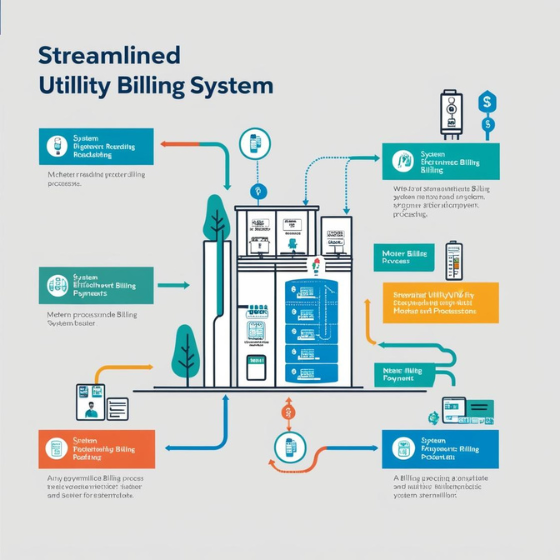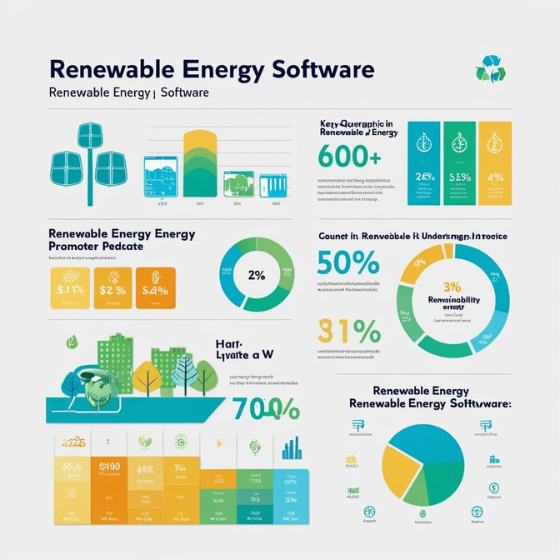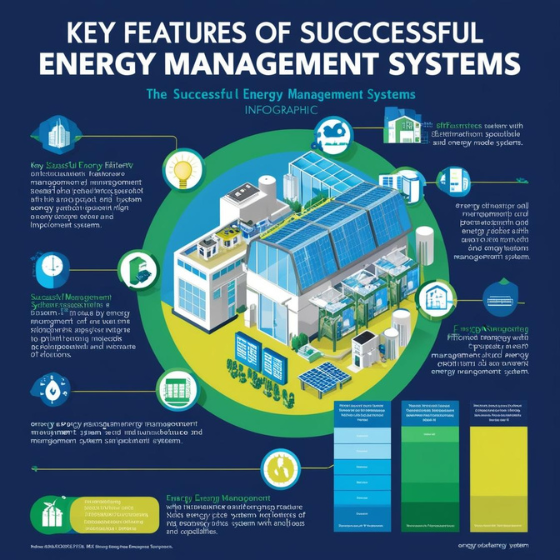Best Practices for Developing Renewable Energy Software
As the renewable energy sector continues to grow, the development of effective and reliable renewable energy software has become critical. From optimizing energy production to facilitating storage and distribution, software plays a pivotal role in supporting the transition to sustainable energy systems. But developing such software requires a strategic approach to ensure it meets technical, environmental, and user-centric demands.
This guide explores the best practices for developing renewable energy software, offering actionable insights for developers, engineers, and businesses committed to driving sustainability through innovation.
1. Prioritize Scalability and Interoperability
Why It Matters
The renewable energy sector is dynamic, with new technologies and systems being introduced regularly. Software must be scalable to accommodate future advancements and interoperable to integrate with diverse energy systems and devices.
Best Practices
- Adopt Modular Architecture: Build software with a modular design to add features or adapt to new technologies without overhauling the system.
- Ensure API Integration: Develop APIs to allow seamless integration with third-party tools, IoT devices, and energy management systems.
- Future-Proof the Software: Use flexible frameworks and programming languages that adapt to evolving industry needs.
Example: A wind farm management tool should integrate with both legacy turbines and next-generation models to optimize performance.
2. Focus on Real-Time Data Processing
Why It Matters
Renewable energy sources, such as solar and wind, are inherently variable. Real-time data processing enables software to monitor, predict, and respond to changes in energy generation or consumption.
Best Practices
- Leverage IoT Sensors: Collect real-time data on energy output, weather conditions, and equipment status.
- Use Edge Computing: Process data locally to reduce latency and improve response times.
- Incorporate AI and Machine Learning: Enable predictive analytics to forecast energy production and optimize grid contributions.
Example: Solar panel monitoring software can predict dips in performance due to cloud cover and recommend adjustments to energy storage systems.
3. Prioritize User-Centric Design
Why It Matters
Whether it’s a utility company, a business, or a homeowner, the end-users of renewable energy software need intuitive and accessible solutions to maximize adoption and effectiveness.
Best Practices
- Intuitive Dashboards: Design dashboards that display energy data in easy-to-understand formats, including charts and graphs.
- Customizable Features: Allow users to tailor the software to their specific energy goals and requirements.
- Accessibility: Ensure the software is mobile-friendly and complies with accessibility standards, such as WCAG (Web Content Accessibility Guidelines).
Example: A homeowner using solar energy software should easily view daily energy production, battery levels, and savings from their smartphone.
4. Ensure Robust Security Measures
Why It Matters
As renewable energy systems become increasingly digital and interconnected, cybersecurity risks rise. Breaches could disrupt energy distribution or expose sensitive data.
Best Practices
- Data Encryption: Secure all data transmissions and storage to prevent unauthorized access.
- Multi-Factor Authentication (MFA): Implement MFA to protect user accounts and system access.
- Anomaly Detection: Use AI to detect unusual activity that may indicate a cyber threat.
Example: A wind farm management platform should have security measures in place to prevent unauthorized control of turbines.
5. Optimize Energy Efficiency
Why It Matters
Renewable energy software should not only manage energy but also help users maximize efficiency. This minimizes waste, reduces costs, and aligns with sustainability goals.
Best Practices
- Demand-Side Management: Include features to optimize energy usage during off-peak times.
- Load Balancing: Distribute energy efficiently across devices, facilities, or grid systems.
- Energy Storage Integration: Optimize the use of batteries to store surplus energy for later use.
Example: Commercial energy management software can recommend reducing HVAC usage during non-operational hours to save energy.
6. Incorporate Renewable Energy Source Optimization
Why It Matters
Each renewable energy source—solar, wind, hydro, or geothermal—has unique characteristics. Software must be tailored to optimize these resources effectively.
Best Practices
- Weather Data Integration: Incorporate weather forecasting for solar and wind energy optimization.
- Energy Source Prioritization: Dynamically prioritize cheaper or more efficient sources.
- Grid Feedback: Enable users to sell surplus energy back to the grid, maximizing ROI.
Example: A hybrid system software prioritizes solar energy on sunny days and switches to wind power during high winds.
7. Comply with Industry Standards and Regulations
Why It Matters
Renewable energy software must align with environmental regulations and energy industry standards to ensure compliance and credibility.
Best Practices
- Regulatory Compliance: Build reporting tools to meet local and international sustainability requirements.
- Energy Certifications: Align software with ISO standards, such as ISO 50001 for energy management systems.
- Transparency Features: Provide clear metrics on energy savings, emissions reductions, and other sustainability KPIs.
Example: Software for solar installations generates compliance-ready reports for tax credits and renewable energy certificates (RECs).
8. Test Rigorously and Continuously Improve
Why It Matters
The performance of renewable energy software directly impacts energy systems and operations. Rigorous testing ensures reliability, while ongoing updates keep the software competitive.
Best Practices
- Simulate Real-World Scenarios: Test software under various conditions, such as peak demand or equipment failures.
- User Feedback Loops: Incorporate feedback from early adopters to refine features and usability.
- Continuous Deployment: Use agile development processes to release regular updates and improvements.
Example: Wind turbine software undergoes stress testing to ensure performance during extreme weather conditions.
9. Align with Sustainability Goals
Why It Matters
Renewable energy software isn’t just a tool; it’s a driver for sustainability. Aligning with environmental goals enhances its value and impact.
Best Practices
- Carbon Tracking: Include tools to measure and report on carbon emissions reductions.
- Sustainability Benchmarks: Provide benchmarks for energy efficiency and renewable energy adoption.
- Education and Awareness: Include features that educate users on the environmental benefits of renewable energy.
Example: A renewable energy platform tracks carbon savings and visualizes the equivalent impact, such as “trees planted” or “cars removed from the road.”
Conclusion: Building the Future of Renewable Energy Software
Developing renewable energy software is a complex yet rewarding process. By focusing on scalability, user experience, real-time processing, security, and alignment with sustainability goals, developers can create impactful solutions that drive the global energy transition.
Adopting these best practices not only ensures the software’s success but also contributes to a more sustainable future for businesses, communities, and the planet.
Are you ready to develop cutting-edge renewable energy software? Partner with Sodio to build scalable, secure, and user-friendly solutions. Contact Us today to get started!
